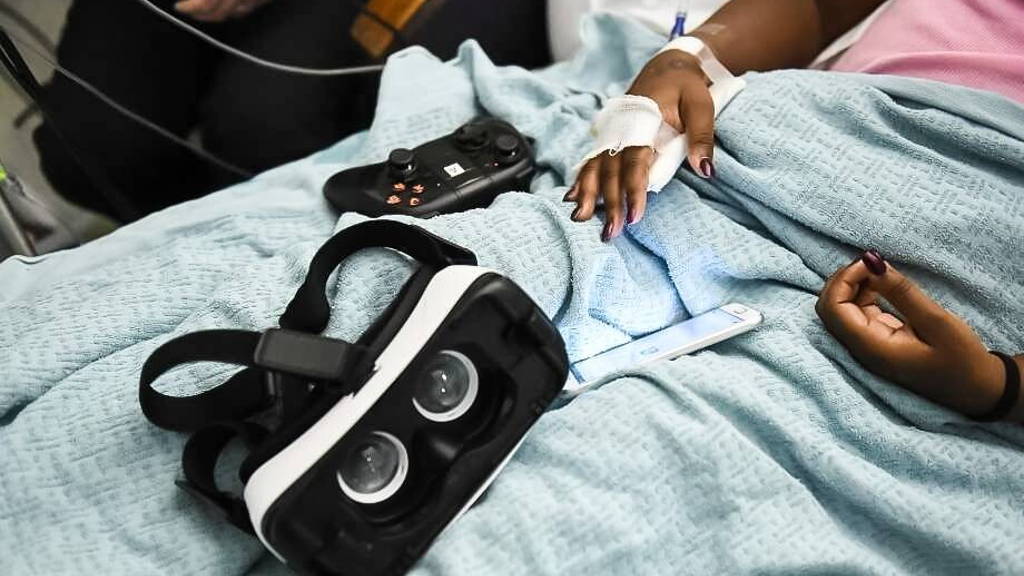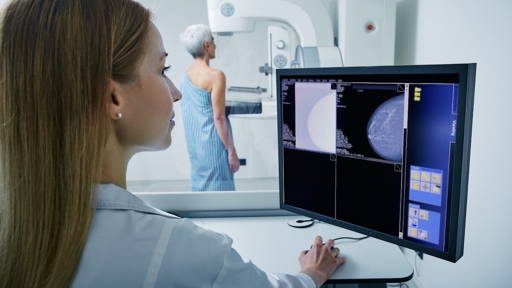At the Queensland Children’s Hospital, virtual reality (VR) is becoming an important tool in pediatric burn care. Researchers from Griffith University, led by Professor Bronwyn Griffin of the School of Nursing and Midwifery, have investigated how the Smileyscope VR headset can help reduce pain and anxiety in young patients during dressing changes. The results, recently published in the Journal of Advanced Nursing, point to a promising future for digital distraction therapies in clinical care.
Dressing changes for acute burn wounds are often painful and distressing for children. According to Professor Griffin, this discomfort can have long-term physical and psychological consequences, including delayed healing. Smileyscope, a VR headset designed specifically for children, offers immersive, calming environments such as underwater scenes or gentle games. The headset acts as a distraction technique, diverting the child’s attention during procedures
Clinical trial with Smileyscope
In the clinical trial, Smileyscope significantly reduced pain and anxiety levels in pediatric patients. It was also well received by both children and their parents. Notably, some patients required only minimal analgesia during VR use, and a few needed no additional pain medication at all.
Burns Nurse Practitioner Kristen Storey from Queensland Children’s Hospital emphasized the broader value of VR in treatment. “Every year, we treat over 1,000 children with burn injuries. Treatments can be traumatic, for both the child and their family. Smileyscope gives us a non-pharmacological tool to make these moments less painful and emotionally taxing,” she said. Storey also praised the practical aspects of Smileyscope: clinicians found it easy to integrate into routine care, and it helped improve the overall hospital experience. The study is published in the Journal of Advanced Nursing.
Optimizing VR content
The study cohort had an average age of seven, with most injuries caused by contact or scald burns. Superficial partial-thickness burns were the most common injury type. Professor Griffin notes that while the initial results are encouraging, future development is needed to optimize headset fit and VR content across diverse pediatric age groups. “It’s encouraging to see how a simple headset can make a significant difference during a painful process,” she added.
As immersive technologies like Smileyscope become more common in hospitals, they offer a glimpse into the future of child-friendly, tech-supported pain management.
VR as a painkiller
Almost six years ago, researchers at Cedars-Sinai Medical Center conducted a study to determine the opportunities to use VR as a painkiller. In a randomized trial with 120 adult patients, experiencing moderate to severe pain, half of the patients were given VR headsets displaying relaxing immersive environments for three 10‑minute sessions daily while the other half watched health‑and‑wellness TV content for the same duration.
The study's findings showed the on-demand use of VR resulted in statistically significant improvements in pain compared to the TV group, with patients in the VR group averaging 1.7 points lower on the pain scale. When researchers analysed findings from the subgroup of patients with the most severe baseline pain of seven or above, VR patients averaged three points lower than the TV group.









